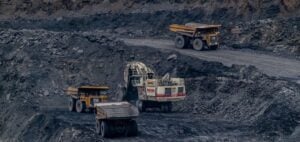Core Natural Resources released its financial results for the second quarter of 2025, highlighting an operating cash flow generation of USD220.2mn and free cash flow of USD131.1mn. Despite a net loss of USD36.6mn, the company continued an active capital return programme, distributing USD87.1mn to shareholders through share buybacks and dividends.
Strengthened synergies and financial adjustments
The group has raised its annual synergy target from the merger, now set between USD150mn and USD170mn, a 30% increase over the initial plan. This optimisation is reflected in lower operational costs and improved margins across all segments. In the high calorific value thermal coal segment, sales increased by 18% over the quarter, reaching an average realised price of USD60.50 per tonne. Production costs stood at USD39.47 per tonne, despite pressure on spot market prices.
Segment performance and operational risk management
The metallurgical segment maintained stable sales volumes at 1.9mn tonnes, with an average realised price of USD104.22 per tonne. However, longwall production at Leer South remains suspended after a combustion event that required a temporary site evacuation in June. Technical assessments confirmed the main equipment remains in good condition. The company plans to reposition the installations by the end of October and anticipates shutdown-related costs between USD20mn and USD30mn in the third quarter, with expected insurance compensation exceeding USD100mn.
Balance sheet strengthening and liquidity strategy
As of June 30, 2025, Core Natural Resources held total liquidity of USD948mn, including USD413mn in cash and equivalents. The company consolidated its securitisation facilities and restructured its debt, including an extension of its revolving credit to USD600mn and a bond refinancing of USD307mn. Since the beginning of the year, the group has repurchased 2.6mn shares, representing 5% of the initial capital under the programme, with USD816.8mn in remaining authorisation for its buyback plan.
Committed markets and regulatory outlook
For fiscal year 2025, the committed order book for high calorific value thermal coal already reaches 30mn tonnes, nearly the full forecast, at a projected average price of USD60 to USD62 per tonne. In the Powder River Basin region, sales are fully secured at USD14.40 per tonne for 2025, with 33mn tonnes already scheduled for 2026. The company also benefits from recent federal measures aiming to ease regulatory pressure on the coal industry, including a law granting a 2.5% tax credit on metallurgical coal production for four years from 2026 and a reduced royalty rate for operations on federal land.
Facing market volatility, the company relies on its ability to generate high cash flow and financial discipline to strengthen its market position. Teams are continuing the integration of operations and developing logistical and commercial solutions to consolidate profitability in an environment shaped by regulatory adjustments and international competition.






















